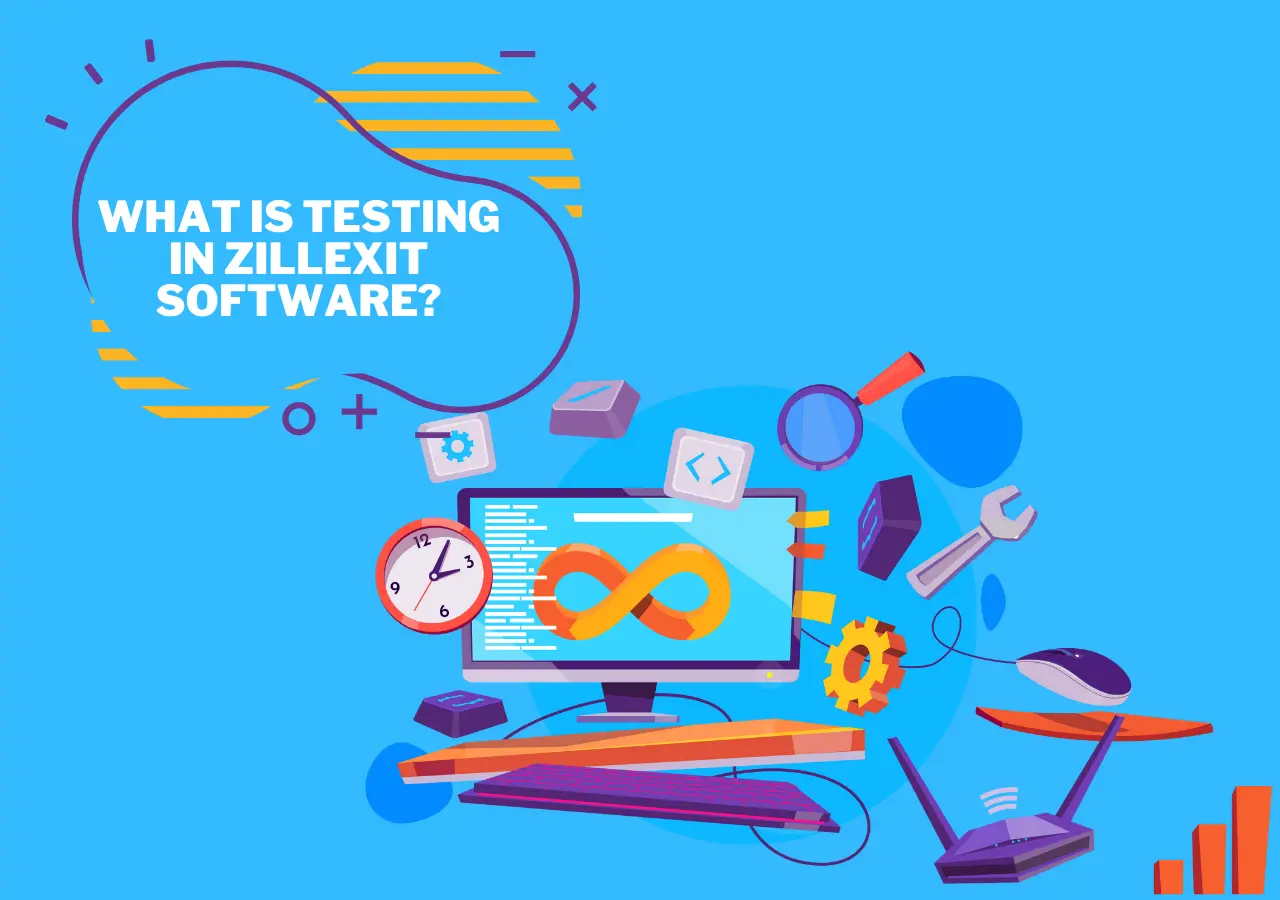Testing in ZillExit Software is a crucial process that ensures the software not only meets the developer’s requirements but also the users’ needs in real-world scenarios. This article explores the various facets of testing within the ZillExit Software environment, elaborating on methodologies, types of tests, and the overall importance of testing in producing robust, functional, and user-friendly software.
What is Zillexit?
ZillExit is a software development company known for its robust solutions that cater to various business needs. The company specializes in creating software that not only meets specific client requirements but also adapts seamlessly to user interactions and data-driven insights. ZillExit’s products are designed to enhance productivity and streamline operations, making them indispensable tools in the present technology-driven landscape.
At its core, ZillExit integrates innovative technologies with intuitive design, ensuring that each software solution is both efficient and easy to use. Furthermore, the company places a strong emphasis on security and data protection, implementing advanced measures to safeguard user information. The firm’s approach of closely working with clients from conception to deployment allows for tailored solutions that precisely meet the dynamic and evolving business challenges.
Understanding Software Testing
Software testing is a critical component of software development that involves evaluating a software product to detect differences between a given input and expected output. Testing is a systematic process to ensure that the software is defect-free, meets the technical and business requirements, and provides a seamless user experience.
Why is Testing Important?
- Quality Assurance: Ensures the software is free from defects and operates as intended.
- Risk Management: Identifies potential issues and risks in the software before it goes live.
- User Satisfaction: Confirms that the software meets user requirements and expectations.
- Cost Efficiency: Detects and resolves problems early, which reduces the cost of post-deployment fixes.
Fundamental Testing Principles
The basic principles guiding ZillExit Software’s testing process include:
- Testing Shows Presence of Defects: Testing may not prove that a software is bug-free, but it can show that defects are present.
- Early Testing: The earlier in the lifecycle testing begins, the more cost-effective it becomes to identify and fix defects.
- Lifecycle Testing: Testing should be integrated at all stages of the software development lifecycle.
What are The Testing Methodologies?
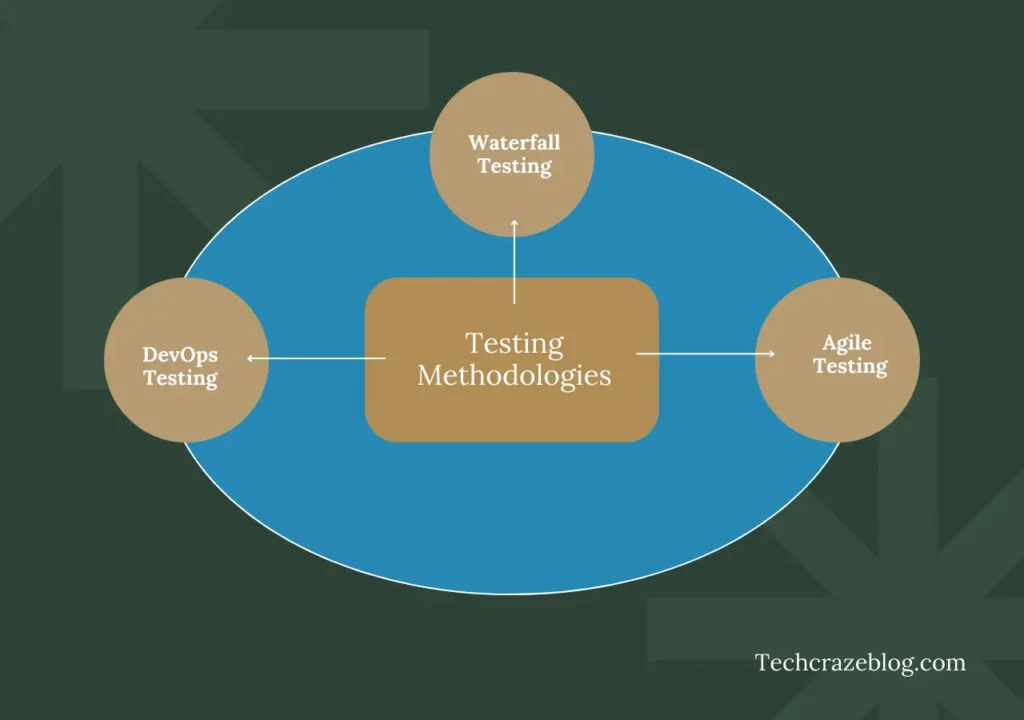
1. Agile Testing
Agile Testing is integrated throughout the lifecycle of the project, meaning that testing starts from day one and is implemented continuously throughout. This methodology aligns with the principles of Agile software development, which emphasizes flexibility, team collaboration, and customer satisfaction. It encourages a decentralized decision-making process, which enhances team productivity and accelerates the development process. The primary advantage of Agile testing is its iterative process where testing plans develop as the project evolves, ensuring any changes in client requirements are promptly addressed.
2. Waterfall Testing
Secondly, Waterfall Testing follows a sequential design process, often used in software development processes, where progress flows steadily downwards like a waterfall through the phases of conception, initiation, analysis, design, construction, testing, and maintenance. This testing methodology is structured and rigid, best suited for projects with clear objectives and stable requirements. The testing phase in the Waterfall methodology comes late in the project lifecycle, which means any changes required after the testing phase can be costly and time-consuming. This method is often critiqued for its inflexibility but praised for its straightforward, disciplined approach.
3. DevOps Testing
The last one is DevOps Testing. This is a cross-disciplinary practice that emphasizes the integration of development and operations teams, aiming to automate all processes that stand between software development and IT operations. It integrates testing into every phase of the development process, from integration, testing, and release to deployment, and infrastructure management. The key benefits of DevOps Testing include shorter development cycles, increased deployment frequency, and more dependable releases in close alignment with business objectives.
Types of Testing in ZillExit Software
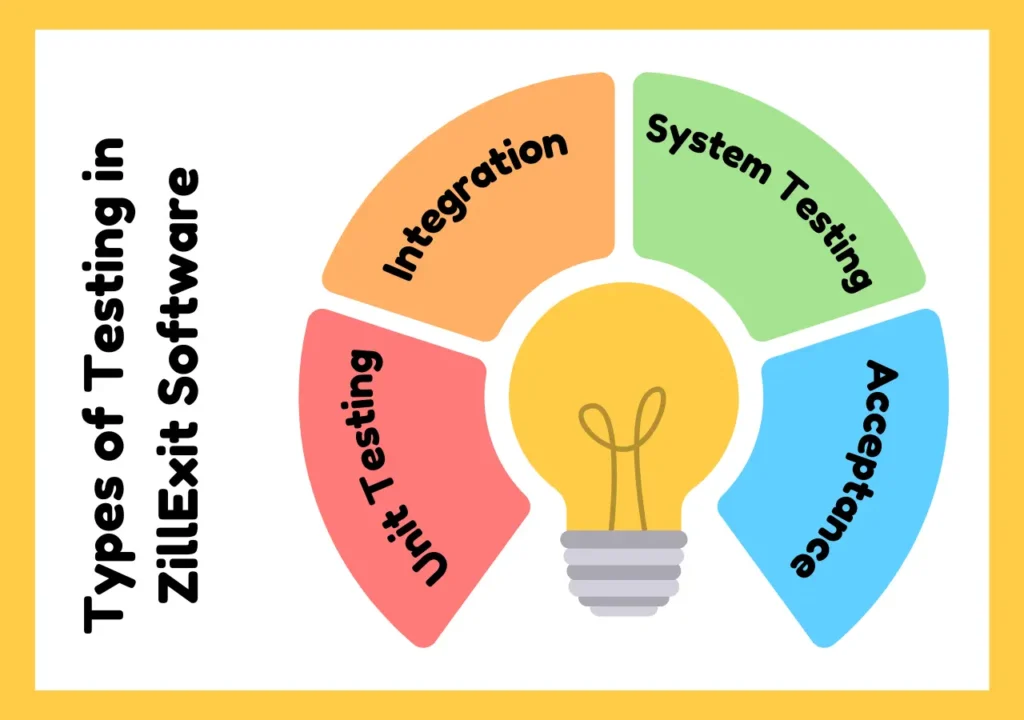
1. Unit Testing
Unit Testing is the first level of software testing where individual components of software are tested. The purpose is to validate that each unit of the software performs as designed. A unit is the smallest testable part of any software and usually has one or a few inputs and usually a single output. In the context of ZillExit Software, unit testing is performed to ensure that each component functions correctly independently, which helps in identifying early bugs in the software’s development phase.
2. Integration Testing
Integration Testing is a level of software testing where individual units are combined and tested as a group. The purpose of this phase is to expose faults in the interaction between integrated units. Test drivers and test stubs are used to assist in Integration Testing. ZillExit employs this testing to verify that the interactions between the modules are working as anticipated and that the system behaves and interfaces as it should once be integrated.
3. System Testing
System Testing is conducted on a complete, integrated system to evaluate the system’s compliance with its specified requirements. At ZillExit Software, System Testing involves testing the system’s architecture, functionalities, and performance under varying environments to ensure that the system is capable of functioning in typical customer environments. It encompasses all combined parts of a system to evaluate the overall system behavior.
4. Acceptance Testing
Acceptance Testing, also known as User Acceptance Testing (UAT), verifies if the system meets the agreed-upon requirements. Performed by the client as the final testing stage before deployment, it ensures the software aligns with business needs and functions flawlessly for end-users in real-world scenarios. It acts as a validation test of the end-to-end system requirements.
ZillExit Software prioritizes all testing stages to guarantee their software products not only adhere to specifications but also function flawlessly in the diverse real-world scenarios they’re intended for. This meticulous approach to testing helps in delivering high-quality software that stands the test of time in terms of performance, scalability, and user satisfaction.
Common Tools and Environments Used in Testing at ZillExit Software
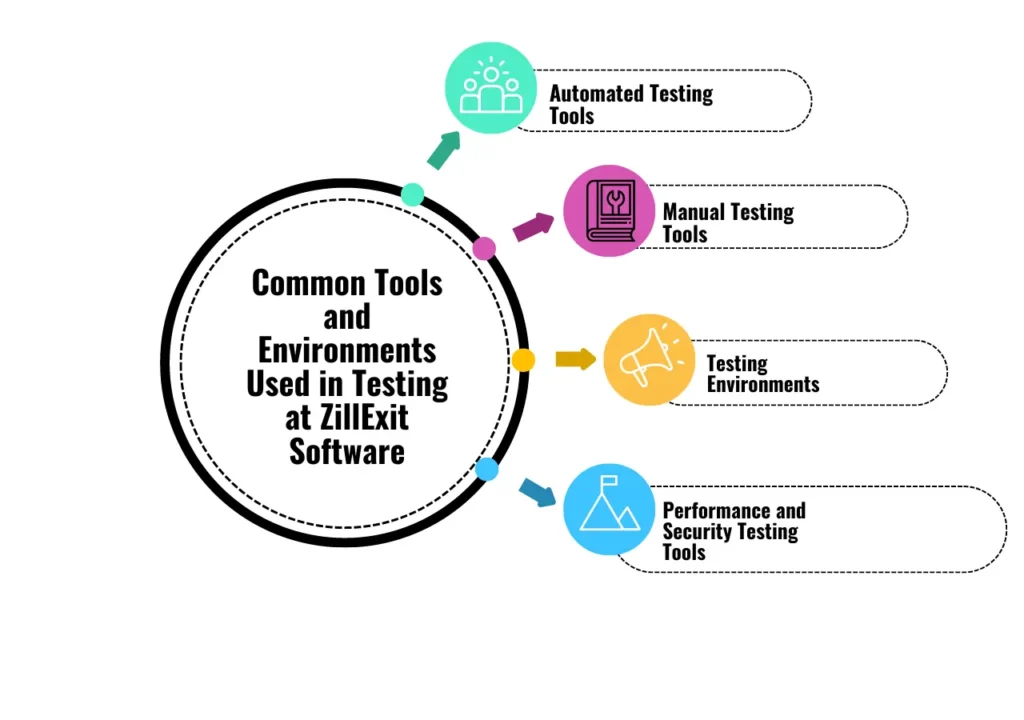
To ensure the efficiency, reliability, and effectiveness of testing, ZillExit Software employs a variety of tools and environments tailored to meet the diverse needs of different testing methodologies. These tools and environments support both manual and automated testing processes, helping to streamline operations, reduce errors, and maintain high quality in software production.
1. Automated Testing Tools
- Selenium: Widely used for web application testing, Selenium supports all major browsers and provides a playback tool for authoring functional tests without the need to learn a test scripting language.
- Jenkins: an open-source automation server, automates software development tasks like building, testing, and deployment, enabling continuous integration and continuous delivery.
- JUnit and TestNG: These are frameworks used primarily for unit testing in Java. They provide annotations to identify test methods and optionally specify timeouts and expected exceptions, making tests easier to read and write.
- QTP/UFT: QuickTest Professional, now known as Unified Functional Testing (UFT), provides functional and regression test automation for software applications and environments.
- Appium: Useful for mobile application testing, Appium is an open-source tool and server that manages WebDriver sessions for different platforms like iOS and Android.
2. Manual Testing Tools
- Bugzilla: A web-based general-purpose bug tracker and testing tool originally developed and used by the Mozilla project, and licensed under the Mozilla Public License.
- Mantis Bug Tracker: This is a free and open-source, web-based bug tracking system that is simplistic and user-friendly. It is often used alongside software development projects for bug tracking and issue tracking.
- TestLink: An open-source web-based test management tool, TestLink facilitates software quality assurance. It enables quality assurance teams to create and manage test cases as well as to organize them into test plans.
3. Testing Environments
- Local Environment: A developer’s own computer where the software is developed. Testing in this environment usually involves unit testing and some early integration testing.
- Development Environment: This is a server that all developers use to integrate their changes with others. This environment is stable but not always perfectly in sync with the production environment.
- Testing/Staging Environment: Mirrors the production environment as closely as possible and is used for final testing before going live. This environment is critical for final performance and security tests to ensure the new changes will not break any existing functionality.
- Production Environment: The live, public domain where the end-users interact with the software. Testing in production is often limited to hotfixes and immediate post-release checks.
4. Performance and Security Testing Tools
- LoadRunner: This tool is used to test applications, measuring system behavior and performance under load. It can simulate thousands of users concurrently using application software, recording and later analyzing the performance of key components of the application.
- Burp Suite: A useful tool for testing web application security. It operates as a web proxy server, and the user can manipulate the traffic passing through it, including traffic using https.
- Wireshark: For network troubleshooting, analysis, and software and protocol development, Wireshark lets you capture and interactively browse the traffic running on a computer network.
Best Practices in Software Testing at ZillExit Software
ZillExit Software adheres to a strict regimen of best practices in software testing, which are crucial for ensuring the delivery of high-quality, reliable software products. These best practices are designed to optimize testing procedures, reduce errors, and enhance the functionality and usability of software applications. Here are some of the key best practices followed at ZillExit Software:
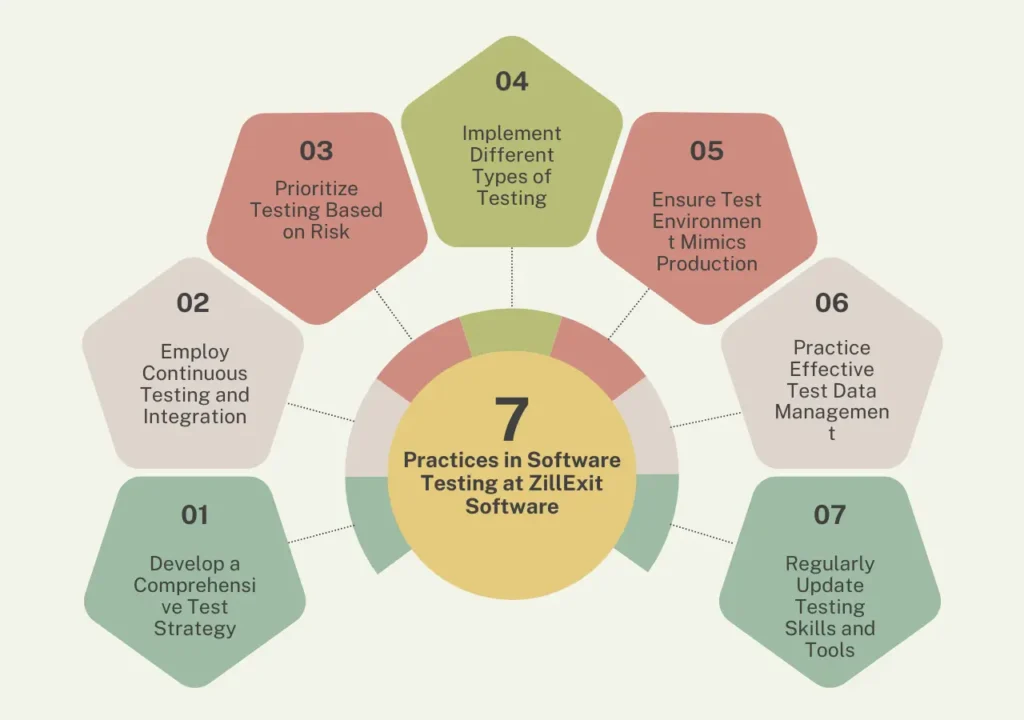
1. Develop a Comprehensive Test Strategy:
- Purposeful Planning: Define what to test, how to test, and when to test early in the development cycle to align testing objectives with business goals.
- Resource Allocation: Ensure that there are sufficient resources, including time, tools, and personnel, dedicated to executing the test plans effectively.
2. Employ Continuous Testing and Integration:
- Automation Tools: Utilize tools like Jenkins and Selenium to automate regression tests and integrate them into the continuous delivery pipeline. This practice helps in identifying defects early and fixing them promptly.
- Continuous Feedback: Implementing continuous integration and continuous deployment (CI/CD) practices to allow for ongoing feedback and prompt correction of issues.
3. Prioritize Testing Based on Risk:
- Risk Management: Identify areas of high risk and allocate more time and resources to testing these features. This approach helps in mitigating potential critical failures that could be costly to resolve later.
- Error Prone Areas: Focus on parts of the software that are complex and have had issues in the past or where changes are being made.
4. Implement Different Types of Testing:
- Layered Testing: Conduct unit testing, integration testing, system testing, and acceptance testing to cover all aspects and layers of the software.
- Specialized Testing: Depending on the software’s requirement, implement performance testing, security testing, and usability testing to ensure robustness and user-friendliness.
5. Ensure Test Environment Mimics Production:
- Realistic Conditions: Test in an environment that closely simulates the actual production environment including hardware, software, and network configurations. This reduces the chances of environment-specific failures.
- Data Integrity: Use data that reflects real-world scenarios to ensure the software performs as expected in real-life situations.
6. Practice Effective Test Data Management:
- Test Data Preparation: Create accurate and comprehensive test data sets. This is crucial for conducting thorough and effective tests, as realistic data sets help in mimicking actual operational scenarios.
- Data Security: Ensure that test data is handled securely, especially when using sensitive or real data, to comply with data protection regulations.
7. Regularly Update Testing Skills and Tools:
- Skill Enhancement: Regular training and updating of skills for the testing team to keep up with the latest testing methodologies and technologies.
- Tool Assessment: Continuously evaluate and update tools used for testing to enhance test efficiency and effectiveness.
Reasons Why You Need the Zillexit Tool
The ZillExit tool represents a leap forward in software development and testing, offering a suite of features designed to enhance productivity, ensure software quality, and streamline project management. Here’s why incorporating the ZillExit tool into your development and testing process is essential:
1. Enhanced Efficiency and Productivity:
The ZillExit tool automates numerous testing and development processes, allowing teams to focus on more complex tasks and innovation. Automation reduces the time spent on repetitive tasks, speeding up the development cycle significantly.
2. Improved Software Quality:
Through its comprehensive testing capabilities, including automated, performance, and security testing, ZillExit helps identify and fix bugs early in the development cycle. This leads to higher-quality software that meets customer expectations for functionality and reliability.
3. Seamless Integration with Development Environments:
ZillExit is designed to integrate smoothly with existing development environments and tools, facilitating a cohesive workflow. This integration capability ensures that teams can adopt ZillExit without disrupting their current processes.
4. Scalable to Projects of Any Size:
Whether working on small-scale applications or large, complex systems, ZillExit scales to meet the project’s needs. Its flexible architecture supports a wide range of applications, from web to mobile, across various sectors.
5. Cost Reduction:
By automating testing and development processes, ZillExit reduces the need for manual intervention, which can significantly cut costs associated with lengthy development cycles and extensive manual testing.
Seamless Integration with ZillExit: A How-To Guide
Integrating new tools into existing workflows can often seem daunting. However, with ZillExit, the process is designed to be as streamlined and user-friendly as possible. This guide will walk you through the steps necessary to integrate the ZillExit tool seamlessly into your development and testing environments, ensuring you can maximize productivity and enhance your project outcomes from day one.
Step 1: Assess Your Current Environment
Before integrating ZillExit, evaluate your current software infrastructure, tools, and processes. This assessment will help you understand how ZillExit can complement your existing setup and what changes are needed for integration.
- Inventory of Current Tools: List all the tools currently in use (e.g., IDEs, version control systems).
- Process Mapping: Document your development, testing, and deployment processes.
- Identify Integration Points: Determine where ZillExit fits into your processes and which tools it needs to interact with.
Step 2: Prepare Your Environment
Prepare your environment to ensure that the integration of ZillExit goes smoothly. This involves setting up the necessary hardware, software, and network configurations.
- System Requirements: Ensure that your system meets the specifications required by ZillExit, including hardware, operating system, and network connectivity.
- Install Necessary Components: Install any required components or dependencies that ZillExit needs to function properly.
Step 3: Install ZillExit
Once your environment is prepared, the next step is to install ZillExit. The installation process involves several key actions:
- Download the Latest Version: Obtain the latest version of ZillExit from the official website or your provider.
- Run the Installer: Execute the installer file and follow the on-screen instructions to complete the installation.
- Configure Settings: During installation, configure the initial settings according to your needs, such as integration preferences and user roles.
Step 4: Configure Integration Settings
Proper configuration is crucial for ensuring that ZillExit works seamlessly with your other tools and systems.
- API Integration: Set up API keys and endpoints if ZillExit needs to communicate with other software via APIs.
- Plugin/Extension Setup: Install any necessary plugins or extensions that enable ZillExit to integrate with other tools like IDEs, code repositories, or CI/CD pipelines.
- Data Sync: Configure data synchronization settings to ensure that ZillExit can import or export necessary data to other systems.
Step 5: Verify Connectivity and Security Settings
Ensuring that all connections are secure and that all systems can communicate properly is essential for a successful integration.
- Test Connectivity: Check the connection between ZillExit and other systems to ensure they can communicate without issues.
- Security Protocols: Establish secure protocols (e.g., HTTPS, SSL) to protect data in transit.
- Permissions and Access Control: Set up appropriate permissions to control access to ZillExit and its data.
Step 6: Train Your Team
With ZillExit installed and configured, the next step is to train your team on how to use it effectively.
- Training Sessions: Conduct training sessions to familiarize your team with ZillExit’s features and functionalities.
- Documentation: Provide comprehensive documentation that team members can refer to when needed.
Step 7: Launch and Monitor
Finally, go live with ZillExit in your production environment and monitor its performance and integration continuously.
- Soft Launch: Initially, ZillExit is in a limited environment to monitor its impact and performance.
- Feedback Loop: Establish a feedback loop with users to continuously improve the integration and usage of ZillExit.
- Ongoing Support: Ensure that ongoing support is available to address any issues or questions that arise.
Conclusion:
In conclusion, testing in ZillExit Software is an essential step that ensures the reliability, security, and optimal performance of the software. By implementing a comprehensive testing strategy that includes unit testing, integration testing, system testing, and acceptance testing, ZillExit can identify any issues early in the development cycle, which helps in maintaining high-quality standards. The process not only supports a robust final product but also enhances user satisfaction by providing a smooth, bug-free experience.

